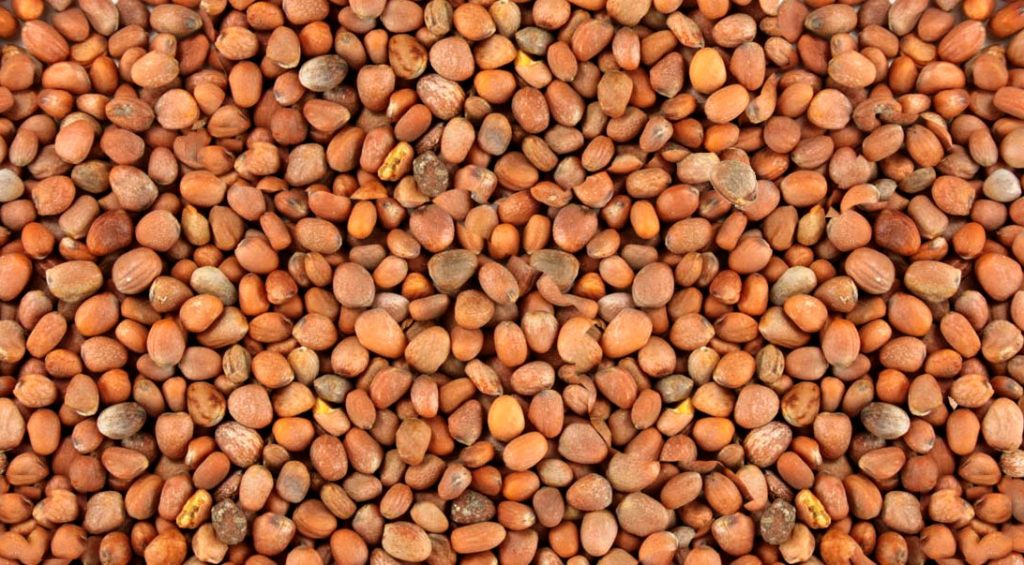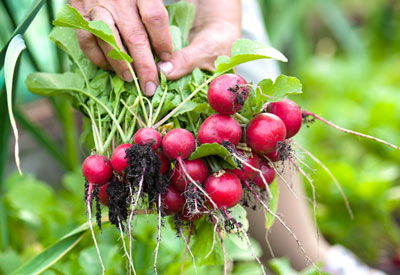Radishes are one of the most fast-growing plants. These plants can mature and be ready to be harvested only in three weeks. Radishes are popular plants not only because they are tasty but also because they are sturdy and low maintenance. It is almost impossible to fail growing radishes. If you want to add a nice flavor to your soups and salads, you should definitely learn how to grow radishes.
1. Choose a variety
There are several varieties of radishes that you can grow. However, each variety has specific properties. Some varieties are best grown in summer, others in spring or winter.
- The most popular variety of spring radishes is Cherry Belle. It matures only in 22 days. It is easy delicious and has an extremely pleasant flavor. You can grow this variety in spring and fall.
- Summer radishes are similar to spring radishes only they take longer to mature. They usually take between 6 and 8 weeks to be ready for harvesting.
- Winter radishes are slow growing plants in comparison with spring and summer radishes. They took longer to mature because they are bigger in size. The most popular varieties of winter radishes are Daikon and Champions. The Daikon variety usually takes 60 days to be ready for harvesting. Its height may reach 18 inches (45 cm)
2. Choose an adequate spot
Radishes require well-drained loose soil. They also prefer to be planted in a spot where they can receive direct sunlight. But, they don’t mind being grown in a partial shade. Before planting your radishes, you should clean the planting site from any rocks or weeds and add some compost, manure or leaf mold to the soil. When choosing a location for your radishes, you should keep in mind the following:
Radishes need sunlight to grow but too much sunlight is harmful to them.
Radishes prefer a high level of soil pH. Any levels that are between 7.0 and 7.4 are acceptable.
These high levels of soil pH will help deter club root, a brassica-infecting fungus, misshape, crack, and rot. Raising the pH is easy. All it takes is that add dolomite lime or agricultural lime or organic matter such as compost.
3. Sowing the seeds

For sowing radish seeds, you should dig 1/2 (12.5 mm) inch deep hole for each seed. However, if you are planting a large radish variety, the hole should be at least 1 inch deep. Radish seeds also require space. Therefore, keep a distance of at least 1 inch (25 mm) between the holes. Radishes should also be planted in rows and you should keep a gap of 1 foot (30cm) between each row. When your plants are 1 inch above the soil, cut them with a scissor to the soil level.
4. Watering

Radishes prefer moist soil. However, make sure not to water them too much. They don’t like waterlogged soil. It is recommended to water these plants frequently and evenly. Otherwise, they will develop a hot, woody taste. To preserve the moisture, use compost. It is quite effective.
5. Pests and diseases
Fungi problems are the most dangerous diseases that can infect your plants. Fungi problems are nasty. They will either kill your veggies or make them tasteless. There are certain signs that can tell you that your plants suffer from fungus problem. They are below:
- pale yellow and grey spots appear on the radish leaves mean that your plant has Septoria leaf spot.
- pale green spots mean that your plant suffers from downy mildew.
- the radish leaves turn yellow between their veins is a sign of blackleg.
There are not many pests that may attack your radishes but you be careful of bugs.
6. Harvesting

When the roots of your radishes are 1 inch (2.5 cm) in diameter, this means that you can start harvesting them. Harvesting radishes is easy. You just need to pull out the whole plant with your hands.
These are the best tips to grow radishes. Follow these tips and you will have a rewarding yield of these tasty fast-growing plants. Besides, they are extremely low maintenance.

